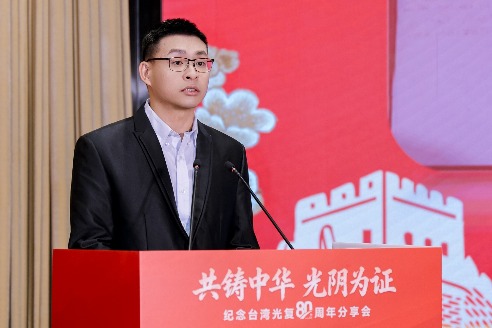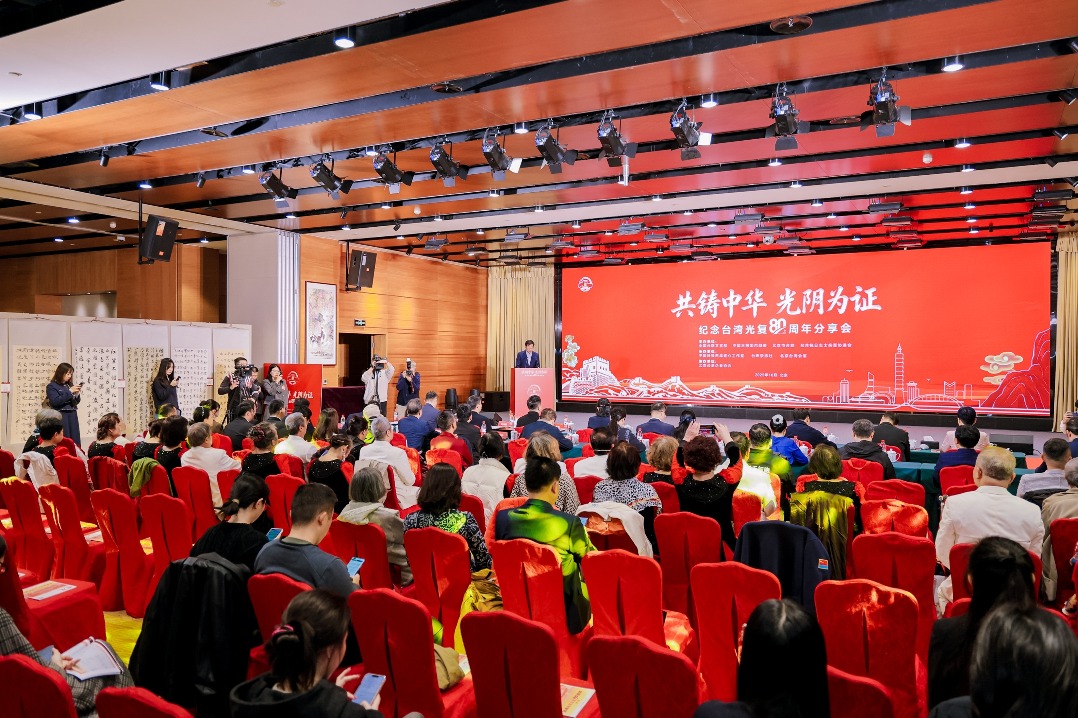Corridors of power


Proactive, forward-looking investment in new energy infrastructure is essential to advance the country's green transition in the next five years
China's upcoming 15th Five-Year Plan period (2026-30) marks a pivotal stage in its pursuit of the dual carbon goals of peaking carbon dioxide emissions before 2030 and achieving carbon neutrality before 2060. It is therefore a decisive moment for accelerating the nation's energy transition and building a new energy system with renewable energy playing an increasing role.
Over the past five years, China has made remarkable progress in energy infrastructure, helping renewables gradually shift from supplementary toward mainstream sources of power to meet incremental consumption. The country's power grids and electricity markets have advanced rapidly, optimizing energy allocation and enhancing interregional connectivity. Its expanding transmission networks have allowed resource-rich western and central regions to turn their natural endowments into engines of growth. In the eastern provinces, about 40 percent of energy supply now relies on major cross-regional corridors such as the west-to-east power transmission and west-to-east gas pipeline projects.
At the same time, the coordinated development of large-scale clean energy bases and grid infrastructure has enabled renewable electricity to be integrated more efficiently into the national system. This has eased regional pressure in renewable consumption while enhancing the overall reliability and flexibility of China's energy network.
China's energy consumption has also grown steadily greener, with a rising share of non-fossil fuels, declining the share of coal use and renewables playing a larger role. The adoption of electric vehicles has surged, supported by a rapidly expanding charging network. China now operates the world's largest EV charging network, with an impressive ratio of close to two charging piles for every five vehicles.
Energy storage and distributed renewable systems have also expanded rapidly. In particular, the growth of pumped storage, electrochemical energy storage and rooftop solar installations has provided crucial balancing capacity for an energy system increasingly shaped by intermittent renewable sources.
China now leads the world in the manufacturing of solar panels, wind turbines and EVs, earning a reputation for high-quality products at competitive prices. However, compared with the rapidly growing renewable energy sources, the development of grid flexibility, business models for energy storage and digital energy systems has lagged behind. This imbalance between advanced renewable manufacturing and delayed infrastructure risks constraining the future growth of renewables.
Energy infrastructure, which links supply and consumption, is central to maintaining a stable and reliable power system. As China's energy transition moves into deeper waters during the 15th Five-Year Plan period, the need for modern infrastructure to support the rapid rise of renewable energy is prominent.
This means upgrading coal-fired power plants for cleaner and more flexible operation. It means extending the EV charging network into homes as EV penetration surges. It also means strengthening energy storage to support power grid stability, an area where national policy backing could play a strategic role.
At the same time, China must continue to develop large renewable bases in the northwest, complemented by a power transmission system and hydrogen system that effectively link them with major energy-consuming regions. Another priority is building smart grids that use artificial intelligence to better match power supply with demand in real time.
Proactive, forward-looking investment in new energy infrastructure that can meet the requirements of the new energy system will create the space needed for the continued growth of wind, solar and EV industries. It will also strengthen the resilience and stability of the power system, supporting the broader integration of renewable energy.
To achieve this, the government must align short-term goals with long-term system design, ensuring that infrastructure development stays ahead of demand. This moderate advanced approach provides the flexibility to adapt to policy and market shifts, avoids the high costs and complexity of later retrofits, and creates room to test and apply emerging technologies.
However, without clear market mechanisms, investment incentives and policy support, the potential of new energy infrastructure cannot be fully unleashed. Therefore, it is essential to establish robust markets and price mechanisms to drive the next stage of growth of new energy infrastructure.
On the system and demand sides, digital transformation will also be central. The widespread use of technologies such as big data, AI and blockchain will enable smarter power scheduling and management systems capable of monitoring and optimizing every stage of energy production, transmission and consumption in real time. A well-developed digital platform can not only enhance coordination across the power system, but also help mitigate the challenges posed by the intermittency of renewable energy and the uncertainty of demand.
Meanwhile, it is also necessary to address obstacles, including fragmented standards, weak cross-sector coordination and data security risks, through policy and regulatory action. These measures are key not only to boosting the end-use consumption of clean energy, but also to improving the overall efficiency of renewable energy across the value chain.
Ultimately, building a new energy system will require coordinated efforts on both the supply and demand sides to achieve the systemic breakthroughs necessary to sustain the rapid expansion of renewables during the 15th Five-Year Plan period.
Building new energy infrastructure during the 15th Five-Year Plan period is not only vital to the rapid expansion of renewables but also strategic to China's long-term energy transition. Accelerated progress should center on three key priorities to drive the coordinated development of energy storage, smart grids, digital systems and end-use infrastructure.
First, improve market mechanisms and drive technological innovation. China should further reform its energy markets, properly expand the electricity price differences between peak and off-peak hours, and introduce dynamic pricing where necessary. These differentiated incentives would encourage independent storage operators and flexible power sources to participate more actively in the market, enhancing overall system flexibility.
At the same time, stronger policy support is needed to help businesses reduce the cost of research, development and deployment, accelerating the large-scale application of energy storage systems, smart grid equipment and digital platforms.
On the consumption side, it is key to accelerate the rollout of EV charging infrastructure with priorities on private charging facilities. To achieve this, government agencies, grid companies and automakers should work together to streamline the approval of charging equipment and community retrofitting processes. This will accelerate the adoption of private charging piles, complement the public network, and create an efficient and user-friendly charging ecosystem.
Second, strengthen integrated planning and moderate advance deployment. Energy infrastructure is highly systemic and requires top-level design and multi-level mechanisms to support coordinated implementation.
Phased construction goals and quantitative targets should be set based on each region's renewable energy development conditions and resource endowment, with a clear strategy for moderate advanced deployment. Priority regions should plan ahead for transmission corridors and energy storage facilities. A multi-level framework should be created to coordinate action between central and local governments, as well as between the public and private sectors, to advance implementation.
At the same time, a system of regular evaluation and dynamic adjustment should be established to refine plans in response to changes in supply, demand and technology, keeping infrastructure planning both forward-looking and grounded in real needs.
Third, innovate financing models and strengthen the green financial system to expand long-term funding channels. Building new energy infrastructure requires massive capital, and sustainable financing must rely on both market mechanisms and financial innovation. This includes promoting diversified green financing tools, such as green bonds, carbon finance and capacity leasing for energy storage. It is also essential to establish sound return mechanisms, thereby strengthening the confidence and enthusiasm of private investors.
At the same time, green finance should be aligned with national energy policy. A combination of fiscal guidance and market-based approaches can attract more long-term capital, creating a virtuous cycle of stable policy, financial support, and industrial growth that provides lasting momentum for the development of new energy infrastructure.
The author is the chair professor at the School of Management and the director of the China Institute for Studies in Energy Policy at Xiamen University. The author contributed this article to China Watch, a think tank powered by China Daily.
The views do not necessarily reflect those of China Daily. Contact the editor at editor@chinawatch.cn.
































